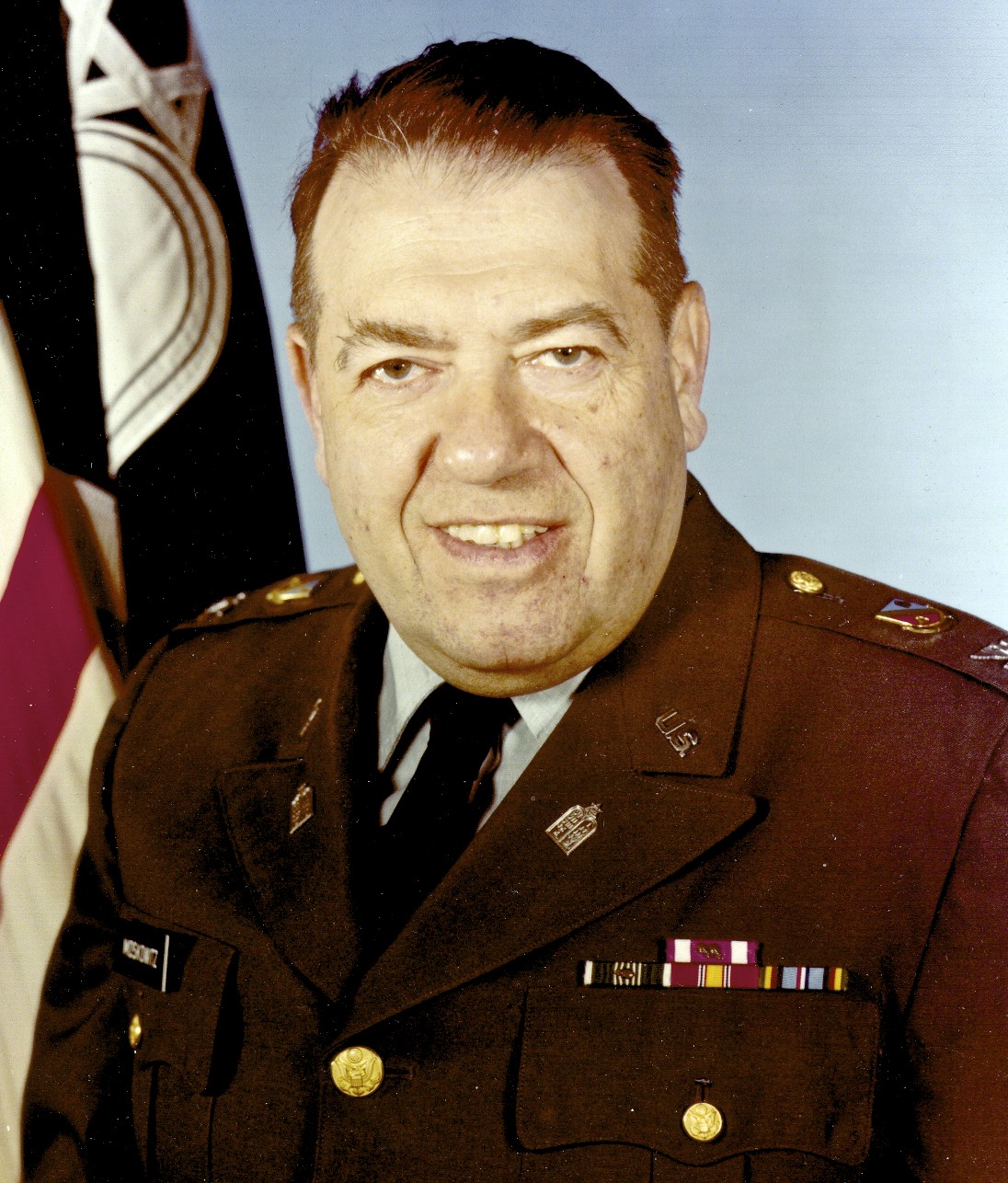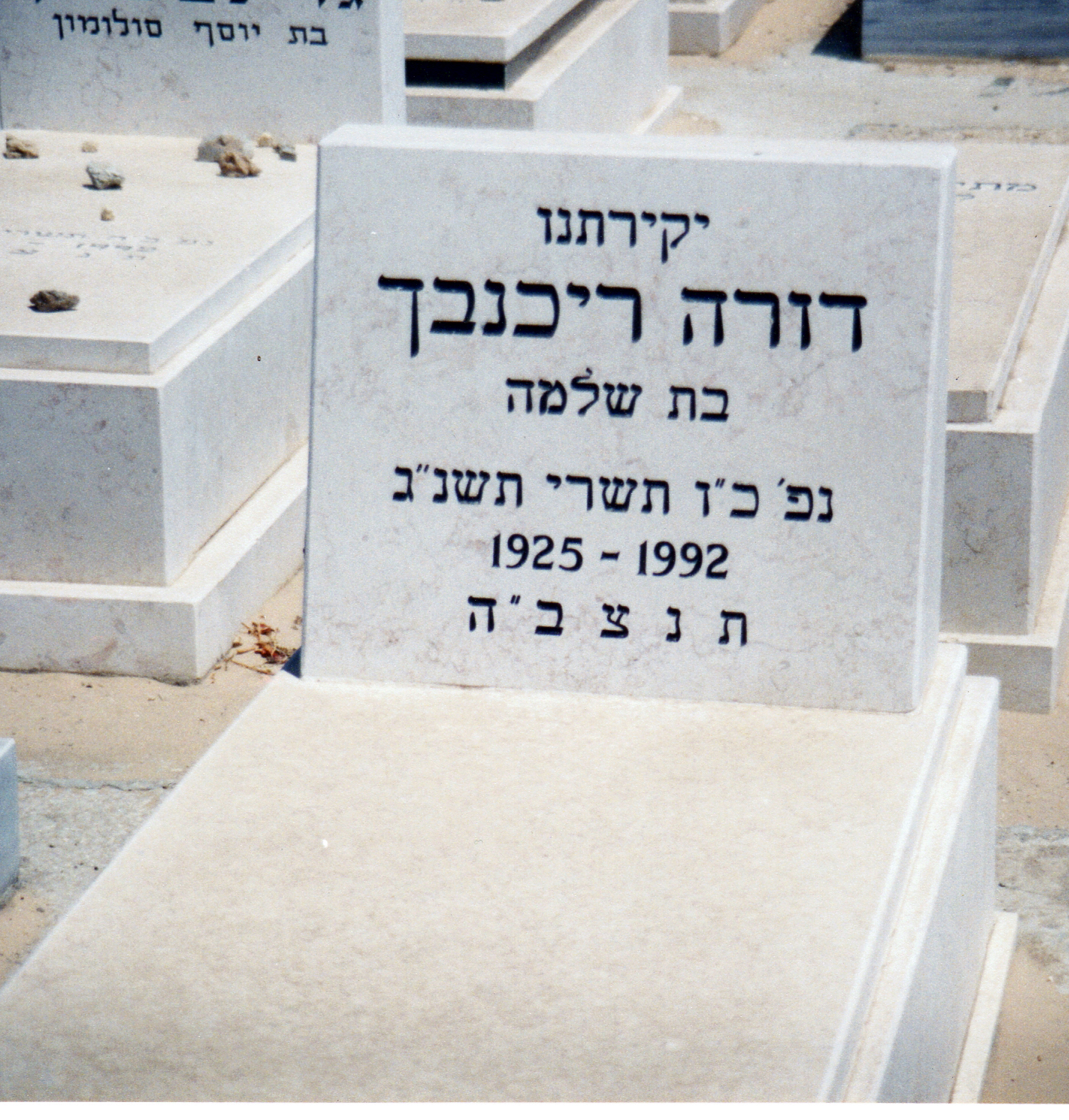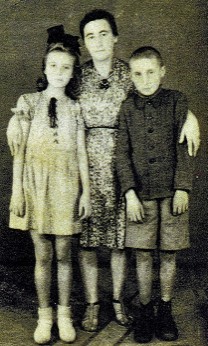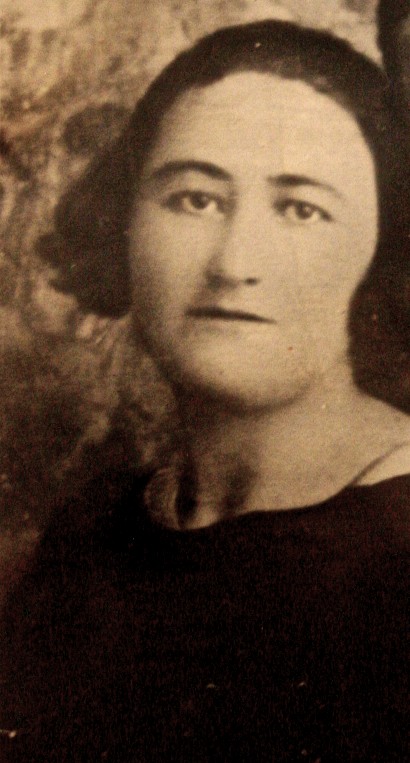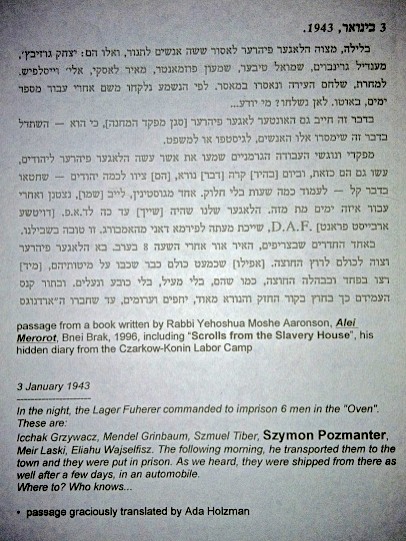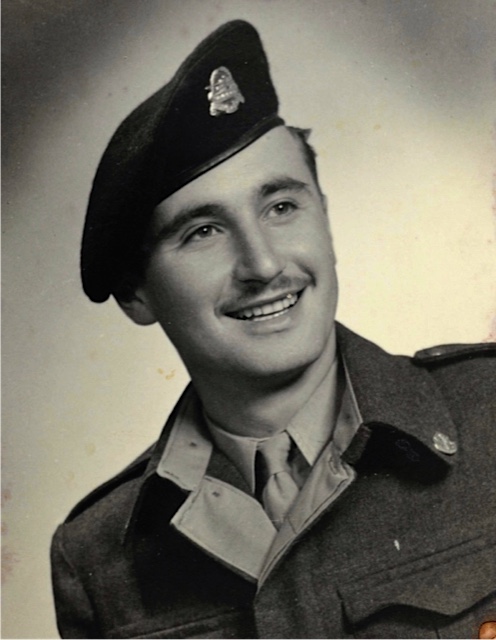|

Aron Nusbaum
Photograph
courtesy of Yad Vashem
|
The following testament was
written by Jewish prisoners in the Chelmo death
camp and found there after the war.
2 April 1943
This note is written by people who will live
for only a few more hours. The person
who will read this note will hardly be able to
believe that this is true. Still, this
is the tragic truth, (in this) place your
brothers and sisters stayed, and they, too,
died the same death! The name of this
locality is Kolo. At a distance of 12 km
from this town [Chelmno] there is a
'slaughterhouse' for human beings. We
have here as craftsmen there [illegible word],
I can give you the their names.
Pinkus Grun of Wloclawek
Jonas Lew of Brzeziny
Szama Ika of Brzeziny
Zemach Szumiraj of Wloclawek
Jesyp Majer of Kalisz
Wachtel Symcha of Leczyca
Wachtel Srulek of Lexcyca
Beniek Jastrzebski of Leczyca
Nusbaum
Aron of Skepe
Ojser Strasburg of Lutomiersk
Mosiek Plocker of Kutno
Felek Plocker of Kutno
Josef Herszkowicvz Plocker of Kutno
Chaskel Zerach of Leczyca
Wolf Szlamowicfz of Kalisz
Gecel of Turek
These are, then, the persons' names which I
give here. these are only a few people
from among the hundreds of thousands who died
here!
Source: Kleinman, Yehudit and Dafni,
Reuven (Eds.) Final Letters--From the
Yad Vashem Archive, London 1991, Weidenfeld
and Nicolson, pp 119-122
|

Szymon
Pozmanter
|

A page from the hidden diary of
Rabbi Yehoshua Moshe Aaronson,
The Scroll of the House of Bondage in Konin
from the collection at Beit Lohamei Haghetaot,
Ghetto Fighters' House Museum
Photo by Roberta Fleishman
The following
is a translation of the Rabbi's Diary by Ada
Holtzman, who maintains a Holocaust Research
Website:
http://www.zchor.org/ALEI.HTM
Her message about the Diary follows:
The document is called : "Scrolls of the
Slavery House", written in hiding by Rabbi
Yehoshua Moshe Aharonson while the events
took place in Czarkow concentration camp
near Konin, Poland.
The diary was found after the war and
published in a book "Alei Merorot", by the
son, R' Y. Aharonson, Bnei Brak, 1996.
---------------------
In
the night, the Lager Fuherer commanded to
imprison 6 men in the "Oven". These are:
Icchak
Grzywacz, Mendel Grinbaum, Szmuel Tiber, Szymon
Pozmanter, Meir Laski, Eliahu
Wajselfisz. The following morning, he
transported them to the town and they were
put in prison. As we heard, they were
shipped from there as well after a few days,
in an automobile.
Where
to? Who knows...
CZARKOW Labor Camp
After the Jews
of Konin had been annihilated, a work camp
was established on the site. In March 1942
more than 800 Jews from the area of Gostynin
and Gabin (Gombin) were brought there and
employed in harsh forced labour. Many of
them died from exhaustion and disease.
Forty-five Jews from the camp prison were
buried in the Christian cemetery in Konin,
but on July 17, 1942, their bodies were
removed on the orders of the mayor, and
interred in a nearby plot among other Jews.
At the beginning of 1943 many of the
inhabitants of the camp were transported to
their deaths in Chelmno and other
concentration camps. This was the signal for
some Jews to band together and carry out
acts of sabotage and arson in the work camp.
In August 1943 this underground group
learned that the Germans were about to kill
all the internees, and it set on fire a
number of huts. Most of these saboteurs met
their deaths in the action, but some
survived. Following an investigation into
the circumstances of the insurrection, the
camp was closed and the captives moved to
assembly points, and eventually to
Auschwitz.
Among the prisoners in Konin and the group
of rebels was Rabbi Yehoshua Moshe Aaronson.
While in the camp he wrote a diary entitled
“Megillat Beit Haavadim”. This diary and
other testamentary documents he hid in two
bottles, which he gave into the keeping of a
Polish carpenter. Only some of these papers
survived, but they bore witness to the life
and fate of the internees in the camp at
Konin.
This is a translation from: Konin
Chapter; Pinkas Hakehillot:
Encyclopedia of Jewish Communities, Poland,
Volume I, pages 235-238, published by Yad
Vashem, Jerusalem
|
|
|
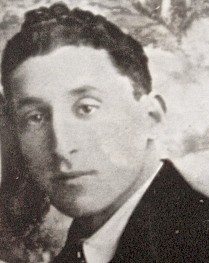 Szlama
Pozmanter
Photograph
courtesy of Pozmanter Family Album
Szlama
Pozmanter
Photograph
courtesy of Pozmanter Family Album
|
Szlama Pozmanter
was born in Skepe, Poland on March 1, 1903 to
Chaim Pizmanter and Hendla Gruza. He
married Rywka Zamoskiewicz and they had three
children: Szymon, Fela, and Sarah.
Szlama was a successful businessman and in 1939
paid the fifth largest (175 zloty)“contributions
for the community”. Szlama sold ‘fine
china’ to merchants for resale.
Prior to the start of the war Szlama had been
thinking of moving to a larger city some 40
miles west of Skepe. Rywka had been
pushing to immigrate to Israel, but Szlama saw a
“hard and difficult life there and convinced her
to stay in Poland where they could expect a good
life with better schools, a better house, and
even a maid.” (interview 7/25/2011, Toronto).
With the start of the war on September 1, 1939,
the German invasion took little time getting to
Skepe. By the end of December, 1939, the
Jews of Skepe were ordered to move out of
town. Szlama and Rwyka took their three
children and were joined by Rywka’s older
sister, Brania and her family of husband David
Flusberg and daughter Sarah. Brania,
David, and Sarah had been expelled from Bad
Oldesloe, Germany in 1938, where David was a
shochet and moved to Skepe.
Szlama’s family and his sister-in-law’s family
traveled to Warsaw. The youngest sister of
Rywka and Brania – Chava, also of Skepe – took
her family to Gostynin to live with her
husband’s family. While in Warsaw Szlama
would make soap and sell it in one of the ghetto
markets. His daughter Fela would keep
watch for German soldiers who would periodically
make sweeps of the street.
In October, 1941, the Pozmanter and Flusberg
families realized it was time to leave the
Warsaw ghetto. They traveled with
ingenuity and chutzpah to make it to Gostynin
and be with Chava and her family.
On December 1, 1941, Szlama was arrested in
Gostynin and transported to a series of labor
camps. Records indicate Szlama was at a
slave labor camp for Jews in Gostyn (called
Gostingen by Germans) and in Kostrzyn, both of
which are in the Poznan province.
“Salomon Pozmanter….was sent to KL Auschwitz in
August 28, 1943 from slave labour camp for Jews
in Kostrzyn (Poznan province). He received
his prisoner’s number 142161. In January
22, 1945 he was transferred to KL Buchenwald
where he received prisoners number 119312.
There isn’t information about his further
fate.” (Auschwitz Museum Archives, March
16, 2011; Ref-I-Arch-i/7834/10)
Family members report that surviving prisoners
remember that Szlama Pozmanter gave up hope that
he would ever see his family alive and perished
a short time before liberation.
|
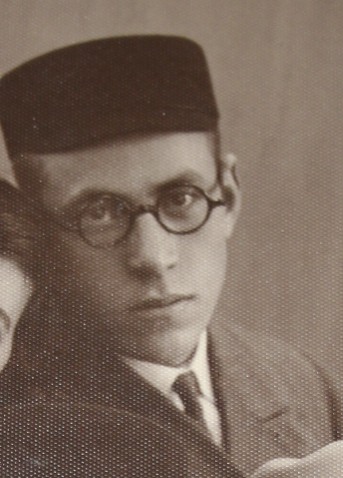
|
Abram
Cudkiewicz was a merchant of fabrics according
to the 1929 Polish Business Directory. He
was the father of at least 8 children.
Most of his children emigrated from Poland
beginning in 1911 when Mordcha-Leib left for New
York City. Over the next 26 years 4 more
sons and two daughters would leave.
In 1939 Abram paid 50 zlotys as a contribution
for the community and his youngest son, Tzadek,
was studying to be a Rabbi. Neither Abram
nor Tzadek survived the Holocaust.
|

|
Tzadek Cudkiewicz
|
Photographs courtesy of Berg
Family Album
|
Ytzkhak
Avraham Cudkiewicz |

Rubinsztejn
Family
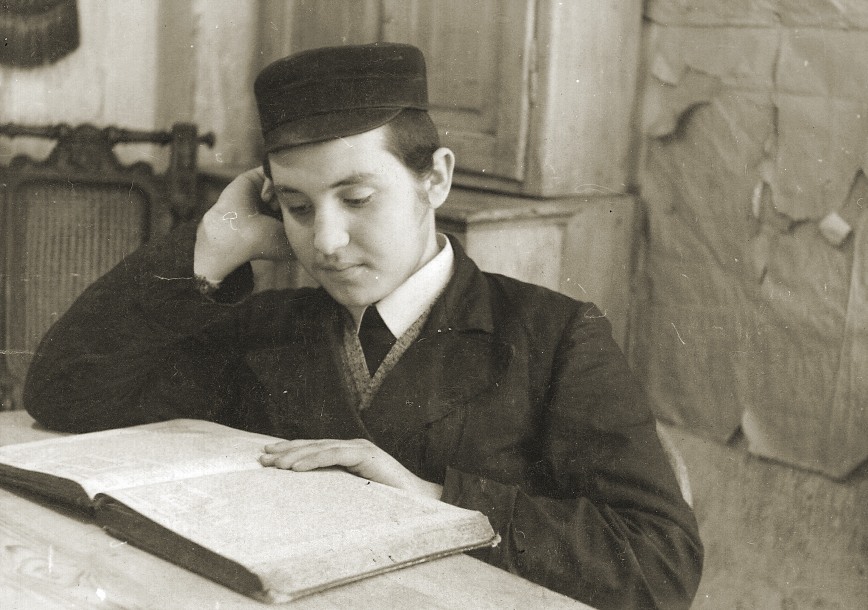
Szamuel
Chaim
Photographs
U.S. Holocaust Memorial Museum,
courtesy
of Dora
Rubinsztejn Weiner
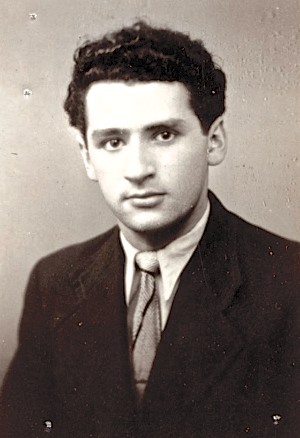
Abraham Baer
Photograph courtesy of Yad Vashem
|
The Rubinsztejn
family about 1924. Chaya Ester and Hersh Yitzhak
hold their sons, Abraham Baer, left, and Szamuel
Chaim in Skepe, Poland, early 1920’s.
Dworja Raca Rubinsztejn, not pictured, (now Dora
Weiner) is the daughter of Hersh and Chaya
(Grynberg) Rubinsztejn. She was born February
17, 1927 in Plock, Poland, where her father was
a Jewish ritual slaughterer. Dworja had two
older brothers, Szamuel and Armand, both of whom
were born in Skepe, Poland in the early 1920's.
The family lived in Plock until the spring of
1929, when Chaya took Dworja and Armand to Paris
to live with her brother's family.
To appease his father, Hersh stayed behind in
Plock with Szamuel. After the German occupation
of northern France in 1940, Chaya and the
children moved south to Grenade sur Adour.
Subsequently, eighteen-year-old Armand was sent
to the Septfondes labor camp. In 1943 he was
transferred to Gurs and then deported to the
east by way of Drancy.
In September 1942 Dworja was sent to live in
Lacaune les Bains, where she was required to
check in weekly with the police. Then, in the
spring of 1944 Dworja went into hiding in L'Isle
Jourdain with false papers provided by the
Maquis resistance. She remained there until the
liberation. Dworja then returned to Paris, where
she lived until her immigration to the United
States in May 1949. She sailed from Cherbourg to
New York on the R.M.S. Queen Elizabeth. Dworja's
mother also survived the war hiding in France,
but her
father, Hersh, and two brothers perished
in Poland.
Explanation from the U.S. Holocaust Memorial
Museum courtesy of Dora Weiner.
Abraham Baer Rubinstein, pictured on
left, was born in Skepe on November 29,
1923. After leaving Poland in 1929 he
moved with his mother Chaya and sister Dworja to
Paris. In 1940 the family moved to Grenade
sur Adour, France after the German
occupation. After spending time in a labor
camp Abraham was deported from Drancy, France in
March, 1943. He perished in Auschwitz.
Photo courtesy of Yad Vashem.
|
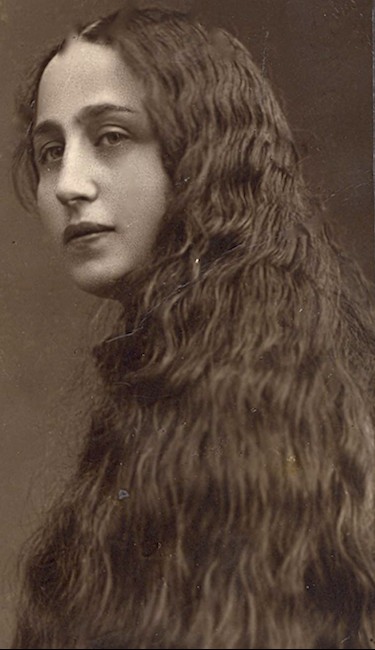
The Rabbi's
wife (Zontag)
Photograph
courtesy of Yad Vashem
|
The wife of Skępe Rabbi Jachiel Halewi
Zontag. Rabbi Zontag served in Skępe for
nearly 10 years and died in 1932 or 33.
According to a Skępe survivor Rabbi Zontag’s
widow married another Rabbi.
|
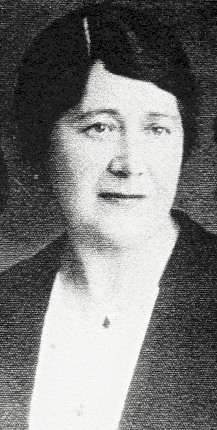
Braina
Zamoskiewicz Flusberg
Photograph
courtesy of Shavit Family Album
|
Braina Zamoskiewicz (b. Skępe) and David
Flusberg (b. Dobrzyn: mod. Golub-Dobrzyn) were
married in the early 1900's. They had two
daughters: Rosa who was born in 1912 in
Dobrzyn and emigrated to Israel before the war;
and Sarah who was born in Blumendorf, Germany in
1920 and remained with her parents in Bad
Oldesloe until their expulsion in 1938.
David was a shochet, and according to a 1938
German Census, he and Brania shared their
address with a mother and son in Bad Oldesloe.
According to American relatives an effort was
being made to bring the three Zamoskiewicz
sisters and their families to the United States
via Hamburg. These efforts failed and
Braina, David, and Sarah left for Poland and
stayed with relatives. Here is one
account.
"Yehoshua Flusberg is the son of Elya-Mordechai
Flusberg, who was David Flusberg’s brother and
the brother-in-law of Braina. He was born in
September 1926. I asked him what he remembered
about Sarah Flusberg (David and Braina’s
daughter). Here is what he told me:
'When David, Braina and their daughter Sarah
were expelled from Germany around 1938, they
moved to Dobrzyn, where they moved in with
Yehoshua’s family, staying in their house.
Yehoshua was 12 years old, and he recalls that
Sarah, who was about 18 at the time, brought
attention to herself because of her very proper
German manners (Yehoshua jokingly referred to
her as a “Yeke”, which is the Yiddish expression
for someone who is very German-like—not
surprising for someone who had been raised in
Germany). He recalls their first Friday-night
dinner together. Yehoshua’s mother had served
gefilte fish, a typical Friday-night delicacy,
which Sarah apparently loathed. However, Sarah
was too well-mannered to decline the portion she
had been served; instead, she pretended to eat
it, discretely hiding it, piece by piece, in
various places under her dress.
Yehoshua recalls that his older brother (also
named David Flusberg) was about Sarah’s age and
took a liking to her.
Some time in 1939—Yehoshua thinks it was only a
few weeks before the German invasion—David,
Braina and Sarah moved to Skępe to join Braina’s
family.
When the German invasion began, Yehoshua and
family (his parents and brother) fled from
Dobrzyn to Skępe in the middle of the night. He
recalls walking all night along a shortcut
through the forest that his father was familiar
with. Because of their fear of being molested by
anti-Semites, his father had tied a handkerchief
around his face to hide his long beard. They did
pass some retreating Polish soldiers, but no one
bothered them. They arrived in Skępe, where they
stayed with David and Braina for about a week.
It was Yehoshua’s 13th birthday, and he recalls
his first “aliya”—his bar mitzvah—took place in
the Skępe synagogue. As he left the synagogue he
observed the very first German soldiers arriving
in Skępe on motorcycles.
Story
recounted by Allen Flusberg
|
|
|
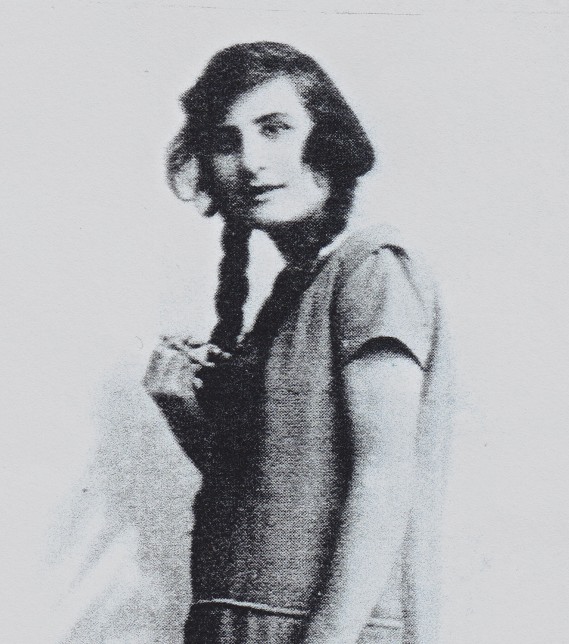
Chava
Zamoskiewicz Strikowsky
Photograph
courtesy of Shavit Family Album
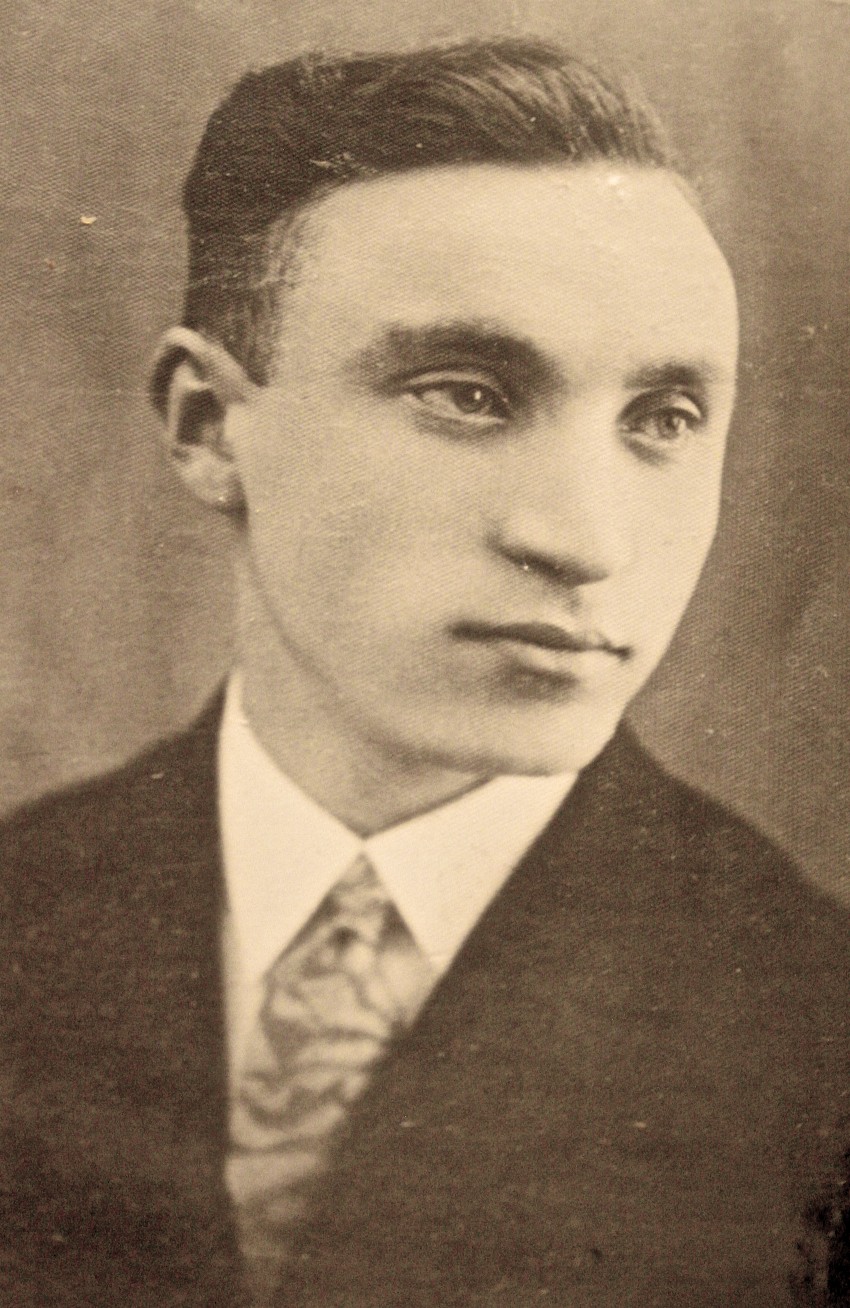
Moshe Strikowsky
Photograph
courtesy of Shavit Family Album
|
Chava Strikowsky was the youngest of the eleven
Zamoskiewicz siblings. She married Moshe
Strikowsky who was a tailor and owned a small
clothing store in the Skepe town square across
from her sister Rivka’s grocery store.
Chava had three children, Avraham (b. 1935),
Felusha (b. 1937), and Yekhiel (b. 1938).
In early September, 1939, the Germans arrived in
Skepe on their drive to Warsaw. One night
not long after the start of the war many of the
Jewish men of Skepe had been taken from their
homes. Chava’s husband was one of the men
and he would never be seen again. By the end of
the year the remaining Jews were ordered out of
Skepe. While Rywka and her family traveled
to Warsaw Chava and her three children were
moved to the (Strzegowo) Ghetto. Avraham
writes of the experience:
“The gendarmes walked around with clubs in their
hands and rifles on their shoulders,
yelling: ‘Schnell! Schnell!’ There were
also many Poles helping the Germans to yell and
push the people onto the trucks…There were no
benches and we stood tightly packed. The
Germans closed the tarp, leaving no air, (only)
the darkness. Little children cried, the
elderly coughed, and the mothers calmed….I don’t
remember how long we spent in the (Strzegowo)
Ghetto, a year, maybe more.
One morning two Capos burst into the building
and yelled: ‘In one hour all of you are to be
outside with your clothes. You are leaving the
ghetto!’ Much panic ensued. Rumors were
spreading that there were concentration camps,
from which no one leaves alive….(When the) truck
stopped and the tarp opened we had arrived at
the Gostynin Ghetto” where Moshe’s younger
brother, Ytzkhak, was a rabbi.
It was to Gostynin that Chava’s sisters (Rivka
and Braina and their families) escaped
after leaving the Warsaw Ghetto in late 1941 and
met up with Chava. Not long after their
reunion the dissolution of the Gostynin ghetto
began in earnest. Periodic roundups of men
were made and they were sent to forced labor
camps in places such as Konin and Posen.
The final liquidation of the ghetto took place
in early 1942 with many taken to Chelmno.
Before that date Rivka arranged for a Polish
farmer to take her and her three children out of
Gostynin one night and Chava and her three
children not long after. After the
placement of Felusha by Chava with a childless
Polish couple she was arrested along with
Yekhiel. Both were murdered. Felusha
and Avraham survived the war and settled in
Israel.
With conditions in the ghetto deteriorating
Rywka and Chava escaped from Gostynin in search
of a place to hide. Not long after their
departure from Gostynin Chava and Yekhiel were
captured and murdered. Felusha and Avraham
both survived the war and eventually made their
homes in Israel.
|
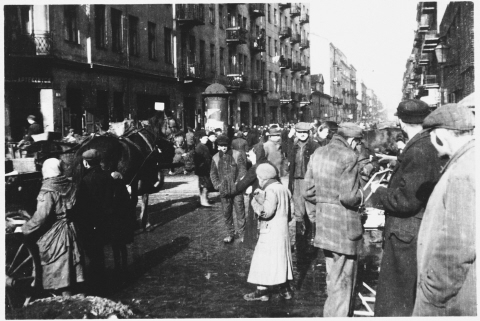
Jews Move
Along a Crowded Street in the Warsaw Ghetto
Photo
Courtesy of the United States Holocaust
Memorial Museum
Photo taken by a German soldier in 1941
and
given to Simon Adelman in 1954
|
The Szaja Gutman
family is emblematic of the Jewish twin tragedy
in the 20th century: immigration and the
Holocaust. The experience of the Gutmans
in Skępe mirrored those of most Jewish families
in Eastern Europe. The Gutmans were not
the exception.
Szaja Gutman was a butcher in the town of Skępe,
Poland as indicated in the 1939 contribution for
the community of 50 zlotys. Szaja already
had witnessed the loss of five sons to Montreal,
Canada with their emigration from Skępe
beginning in 1920. A look at ship manifest
records provides a skeletal look at this part of
the family history.
• On November 8, 1920 Szaja's son, Isek (b.
1895), a tailor, arrived in Quebec aboard the SS
Scandanavian. With $25 in his pocket he
was going to his new life in Canada with cousin,
Efroim Dvalickis, at 65 Duke St.
• April, 2, 1927 on board the SS Estonia two
more Gutman brothers, Szlama Dawid (b. 1905) and
Ide Lajb (b. 1906), tailors, arrived in Halifax,
Nova Scotia from Danzig, Poland on their way to
their brother, Isaac Gutman, 1298 Clarke St.,
Montreal.
• Finally, on May 25, 1929, brothers Szmuel
Jankel (b. 1897) and Pinchas (b. 1911) aboard
the SS Estonia from Danzig, Poland, arrived in
Halifax. Listed as 'laborers' both were going to
brother Szlama who lived at 27 Duluth Ave.,
Montreal. A cousin of the Gutman brothers
- Zalmon Burtkie, a nephew of Szaja Gutman - was
also on the same ship. His passage was
paid by William Smye, a farmer in East Flamboro,
Ontario.
Before the outbreak of the war in 1939 Szaja
Gutman had decided to leave for Canada.
After selling his business in Skępe, Szaja
booked passage for himself, his wife and two
children for Montreal to be with the rest of his
family. He left for Gydnia (Gdansk)
several weeks before the war started, but no
ships were leaving the port. And then at
the start of the war on September 1, 1939 the
port was closed and the remaining Gutmans in
Poland were trapped.
The rest of the story is told by his grand
niece, Faye Pozmanter.
"In December,
1939, all the Jews of Skępe were ordered to
leave their homes and move to Warsaw.
The Pozmanters ran into Szaja and his family
in Warsaw, They were destitute and
approached Faye's father on a number of
occasions for help. Since Szlama
Pozmanter had resources hidden when he left
Skępe he was able to help Szaja and his family
out. However, the Gutmans had no where
to sleep in Warsaw and lived wherever they
found space." When asked about
their fate Faye believed "(the Gutmans)
never made it out of Warsaw. With no
resources they probably did not survive the
early years of the Warsaw ghetto when so many
died of starvation or disease."
|
|
